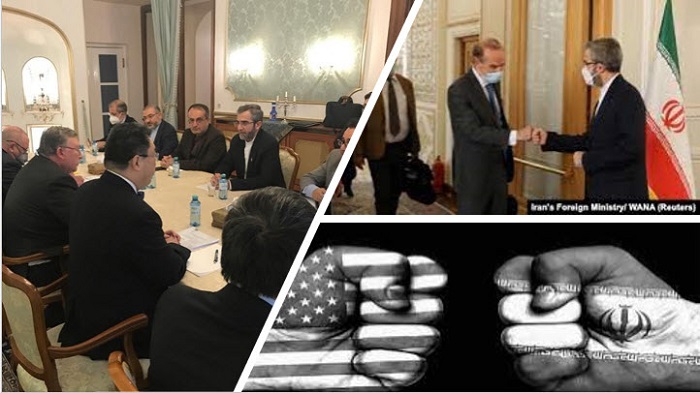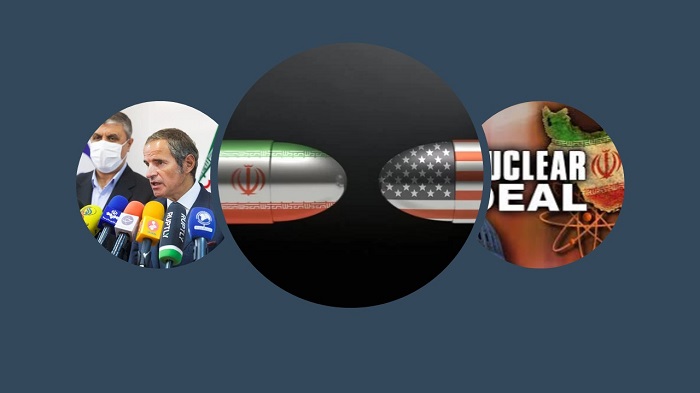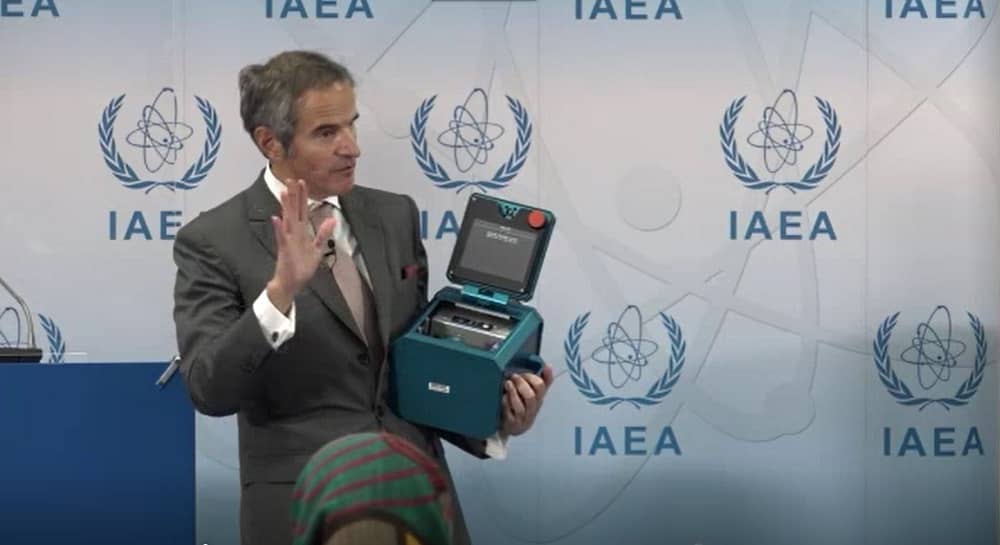
(NCRI) and (PMOI / MEK Iran): Tehran’s apparent refusal to compromise,” the National Council of Resistance of Iran (NCRI) said. The government continues to demand complete release from US sanctions without delivering anything in exchange.”
On Thursday, it was claimed that Rafael Grossi, the head of the International Atomic Energy Agency (IAEA), had reached a new agreement with the Iranian regime to postpone the complete collapse of a monitoring regime that has been critical to keeping the 2015 Iran nuclear deal alive.
Tehran is refusing inspectors access to the Karaj site
Since February, the IAEA’s mission in Iran has been greatly undermined by restrictions imposed by Iranian authorities in an attempt to persuade the US to lift sanctions that were re-imposed or imposed for the first time following the US’s withdrawal from the Joint Comprehensive Plan of Action (JCPOA) in 2018. Grossi’s conversations with Iranian authorities, however, kept IAEA inspectors from being completely expelled from the nation. Instead, they stayed but were mostly barred from conducting in-person inspections or even gaining access to CCTV footage and other data.
Furthermore, it was soon revealed that Tehran was still refusing to allow inspectors access to the TESA Karaj centrifuge manufacturing facility, in violation of its own agreement.
His recent agreement with Iran apparently settles the persistent issue of Karaj facility upkeep, however, it was announced before any tangible actions toward delivering its promise had been taken. The reinstallation of the cameras was described by Iranian authorities as “imminent,” but they minimized its influence on the IAEA’s mission, emphasizing that the material acquired by the new cameras would remain off-limits to inspectors until the US resumed sanctions easing.

(PMOI / MEK Iran) and (NCRI): His recent agreement with Iran apparently settles the persistent issue of Karaj facility upkeep, however, it was announced before any tangible actions toward delivering its promise had been taken.
The US is planning alternative measures in the event
Negotiations to restore the JCPOA resumed in Vienna on November 29 but quickly ran into impediments as Iranian officials reaffirmed their commitment to a negotiation position that gave nothing of substance in exchange for the demands it made of the US. Tehran has consistently stated that it will only begin to stop its provocative nuclear operations after sanctions are lifted. The JCPOA’s Western signatories have naturally regarded this as a non-starter, with each of them condemning the regime during the most recent Vienna talks for presenting demands that were irreconcilable with the compromises already achieved at six prior sessions.
Officials in the United States, in particular, have stated that they are actively planning alternative measures in the event that diplomacy fails, as it may if Iran insists on “playing for time.” The current agreement between Iran and the IAEA will undoubtedly be highlighted by regime detractors as an example of this occurrence. Even if the monitoring cameras are reinstalled, the scenario afterward will still have a “blurred image” of the nuclear program, according to Grossi, but marginally clearer than the image available a month ago.

(PMOI / MEK Iran) and (NCRI): Even if the monitoring cameras are reinstalled, the scenario afterward will still have a “blurred image” of the nuclear program, according to Grossi, but marginally clearer than the image available a month ago.
In IAEA’s degraded mission, officials boasted about it
Grossi’s AP interview reference to the “illusion” of surveillance was seemingly undermined by his statement following the current deal. That statement mentioned restarting a “continuity of knowledge” about Iran’s nuclear operations, but no such continuity exists or is expected following the execution of the agreement. During the IAEA’s degraded mission, Iranian officials boasted about it, such as when Mohammad Eslami, the head of Iran’s Atomic Energy Organization, responded to the agency’s previous quarterly report by stating it had severely undervalued Iran’s stockpile of 20% enriched uranium.
If the damage to TESA Karaj was not caused by sabotage, it was almost certainly caused by Tehran’s ongoing efforts to enhance its enrichment centrifuges and/or connect them in more complex configurations. And if that is the case, the international community will not know the facts until the 2015 nuclear deal is restored or the regime is compelled to adopt considerably greater transparency as a result of coordinated, multi-lateral pressure.
(PMOI / MEK Iran) and (NCRI): Fitting a Square Peg into a Round Hole with Iran Negotiations – April 2021
MEK Iran (follow us on Twitter and Facebook)
and follow Maryam Rajavi’s on her site Twitter & Facebook
and follow NCRI (Twitter & Facebook) and People’s Mojahedin Organization of Iran – MEK IRAN – YouTube

